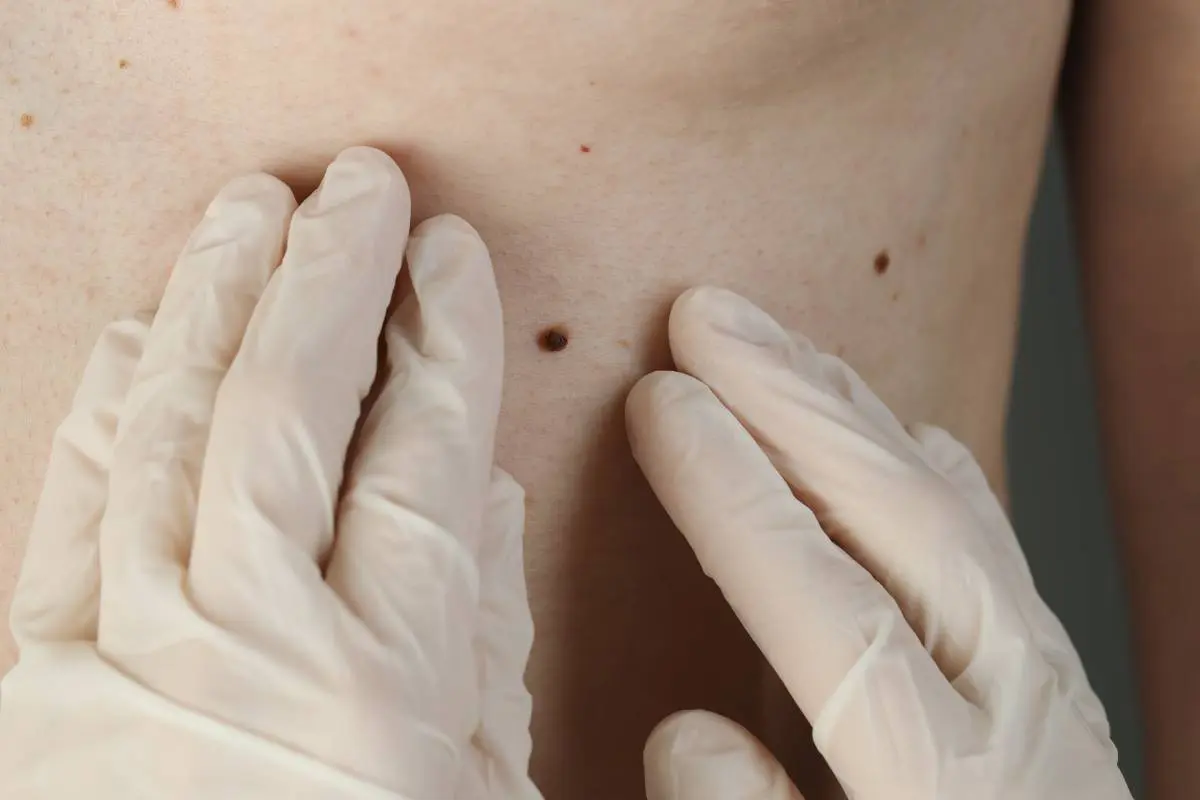Looking to navigate the path to your dermatology license? Whether you’re wrapping up residency or planning for board certification, state requirements can vary widely. Knowing the differences up front can save you time and paperwork. Keep on reading for a step-by-step guide to obtaining your license, as well as your state’s fee and renewal details.

How to Get Your Dermatologist License
Ready to launch your career in skin health? Securing a dermatologist license brings together formal education, hands-on training, exam success, and ongoing recertification.
- Complete an undergraduate degree (four years)
Begin with a bachelor’s degree that includes courses in biology, chemistry, physics, and math. Aim for a GPA above 3.5 and prepare for the Medical College Admission Test (MCAT).
Research projects or volunteer work in clinical settings can strengthen your medical school application.
- Attend medical school (four years)
Enroll in a Doctor of Medicine (MD) or Doctor of Osteopathy (DO) program. In the first two years, you study subjects such as anatomy, physiology, and pharmacology.
In the final two years, you complete clinical rotations across multiple specialties, including a dermatology clerkship where you learn to identify common skin conditions and perform basic procedures.
- Pass licensing exams
All physician candidates must complete the United States Medical Licensing Examination sequence — Step 1, Step 2 Clinical Knowledge (CK), and Step 3. Students typically take Step 1 at the end of their preclinical years and Step 2 CK during their final year of medical school.
Those in Doctor of Osteopathy programs may substitute the Comprehensive Osteopathic Medical Licensing Examination (COMLEX) Levels 1 to 3 instead.
Eligibility for Step 3 requires holding an MD or DO degree and passing Steps 1 and 2 CK; the USMLE program advises completing at least one postgraduate year of training (internship) before attempting Step 3.
Many state medical boards explicitly require proof of postgraduate year 1 before registration. Timing varies state by state.
- Complete an internship (one year)
Finish a one-year internship in general medicine, surgery, or a transitional program. This year provides broader exposure to patient care and meets state requirements for entering a dermatology residency.
- Finish a dermatology residency (three years)
Match into an Accreditation Council for Graduate Medical Education (ACGME)-accredited dermatology residency. Over three years, you rotate through outpatient clinics, inpatient services, and surgical and cosmetic units.
You gain hands-on experience managing conditions from acne to skin cancer and learn procedures like biopsies and laser treatments.
- Achieve board certification
After residency, register for the certification exam offered by the American Board of Dermatology or an approved equivalent. Passing this exam grants certification, demonstrating that your knowledge and skills meet national standards.
- Obtain your state medical license
Submit an application to your state medical board with official transcripts, exam scores, residency verification, and required background checks. Once approved, you receive a license that allows you to practice dermatology in that state.
- Maintain licensure and certification
Renew your license on the schedule set by your state board, typically every one or two years. Complete the required continuing medical education credits and pay the renewal fee. The dermatology board also requires ongoing education and periodic recertification to keep credentials in good standing.
State-by-State Breakdown of Dermatology License Requirements
This chart includes all 50 U.S. states, the District of Columbia, Guam, and Puerto Rico.
| State | Initial Fee | Renewal Fee | Renewal Interval |
| Alabama | $375 (incl. $60 UA fee) | $300 | 1 year |
| Alaska | $750 ($400 application + $350 lic.) | $425 | 2 years |
| Arizona (MD) | $500 | $350 | 2 years |
| Arizona (DO) | $400 | $636 | 2 years |
| Arkansas | $500 | $220 | 1 year |
| California (MD) | $1,850 ($674 app + $1,176 lic.) | $1,206 | 2 years |
| California (DO) | $625 ($200 proc + $425 lic.) | $400 | 2 years |
| Colorado | $390 | $415 | 2 years |
| Connecticut | $565 | $570 | 1 year |
| Delaware | $430 | $378 | 2 years |
| District of Columbia | $803 | $803 | 2 years |
| Florida (MD) | $655 ($300 app + $355 + NICA) | $749 (incl. NICA) | 2 years |
| Florida (DO) | $605 | $305 | 2 years |
| Georgia | $500 | $230 | 2 years |
| Guam | $400 | $250 | 2 years |
| Hawaii (MD) | $392 (full biennium) | $402 on-time / $408 late | 2 years |
| Idaho | $400 | $200 | 2 years |
| Illinois | $500 | $543 | 3 years |
| Indiana | $250 | $200 | 2 years |
| Iowa | $495 | $450 | 2 years |
| Kansas | $300 | $300 | 1 year |
| Kentucky | $300 | $150 online / $160 paper | 1 year |
| Louisiana | $382 | $330 | 1 year |
| Maine (MD) | $700 ($600 + $100 exam) | $500 | 2 years |
| Maine (DO) | $350 | $525 | 2 years |
| Maryland | $790 (US/Can) / $890 (foreign) | $486 | 2 years |
| Massachusetts | $600 | $600 | 2 years |
| Michigan (MD) | $375 | $314 | 3 years |
| Minnesota | $424 | $192 | 1 year |
| Mississippi | $550 | $300 | 1 year |
| Missouri | $75 | $100 | 2 years |
| Montana | $375 | $375 | 2 years |
| Nebraska | $300 | $121 | 2 years |
| Nevada (MD) | $1,425 | $800 | 2 years |
| Nevada (DO) | $500 | $350 | 1 year |
| New Hampshire | $413 | $413 | 2 years |
| New Jersey | $805 | $580 | 2 years |
| New Mexico (MD) | $400 | $600 | 3 years |
| New York | $735 | $600 | 2 years |
| North Carolina | $400 | $250 | 1 year |
| North Dakota | $400 | $400 | 2 years |
| Ohio | $305 | $305 | 2 years |
| Oklahoma (MD) | $500 | $250 | 2 years |
| Oregon | $1,171 | $752 | 2 years |
| Pennsylvania (MD) | $395 ($35 app + $360 lic.) | $360 | 2 years |
| Puerto Rico | $500 | $250 | 3 years |
| Rhode Island | $1,090 | $1,090 | 2 years |
| South Carolina | $580 | $155 | 2 years |
| South Dakota | $400 | $400 | 2 years |
| Tennessee (MD) | $510 | $225 | 2 years |
| Tennessee (DO) | $410 | $225 | 2 years |
| Texas | $817 | $270–$456 | 2 years |
| Utah | $200 | $193 | 2 years |
| Vermont (MD) | $650 | $525 | 2 years |
| Virgin Islands | $250 | $175 | 2 years |
| Virginia | $302 | $337 | 2 years |
| Washington (MD) | $511 | $996 | 2 years |
| Washington (DO) | $391 | $461 | 1 year |
| West Virginia | $400 | $400 | 2 years |
| Wisconsin | $60 | $60 | 2 years |
| Wyoming | $400 | $135 | 1 year |
Types of Dermatologists
After earning your dermatology certification, many clinicians pursue specialized fellowships or training tracks to become medical, cosmetic, pediatric, surgical, or dermatopathology experts.
Medical (General) Dermatologists
Medical dermatologists are board-certified physicians who diagnose and treat all conditions of the skin, hair, and nails.
- Common Conditions: Acne, eczema, psoriasis, dermatitis, rosacea, hair, and nail disorders.
- Procedures: Skin exams, biopsies, cryotherapy (freezing lesions), light/laser therapy, prescription topical, and oral medications.
- Focus: Medical (non-cosmetic) management of skin diseases, prevention of skin cancer, and overall skin health.
License and Certification
State Medical License: Complete four years of college, four years of medical school (MD or DO), pass USMLE Steps 1 to 3 (or COMLEX Levels 1 to 3), then finish a one‑year internship and a three‑year ACGME dermatology residency.
Board Certification: Pass the American Board of Dermatology (ABD) exam.
Maintenance: Renew your state license every one to two years with required CME. Recertify with the ABD every 10 years or through Maintenance of Certification.
Pediatric Dermatologists
Pediatric dermatologists are dermatologists with extra fellowship training in childhood skin conditions. They specialize in treating infants, children, and adolescents. While any dermatologist can see kids, pediatric dermatologists handle complex or rare cases.
- Common Conditions: Birthmarks and vascular lesions (hemangiomas, port-wine stains), atopic dermatitis, pediatric warts and molluscum, and diaper rash.
- Rare/Complex Cases: Genetic or blistering disorders (epidermolysis bullosa), severe acne in teenagers, and congenital nevi.
- Procedures: Safe skin biopsies on children, laser treatment for vascular birthmarks, and topical/systemic therapy tailored for pediatric patients.
- Focus: Childhood growth and development of skin, tailoring treatments to younger patients and their families.
License and Certification
State Medical License: Follow the same pathway as general dermatology.
Board Certification: Pass the ABD exam and complete a one‑year pediatric dermatology fellowship (noted on your certificate).
Maintenance: Renew with pediatric-focused CME every cycle; maintain ABD certification as usual.
Cosmetic Dermatologists
Cosmetic dermatologists focus on aesthetic procedures to improve the appearance of skin.
- Common Procedures: Wrinkle injections (botulinum toxin), dermal fillers (hyaluronic acid), laser resurfacing (for scars or pigmentation), chemical peels, microdermabrasion.
- Target Concerns: Fine lines and wrinkles, uneven skin tone, acne or surgical scars, sagging skin, age spots.
- Focus: Enhancing appearance (face, neck, body) using minimally invasive and surgical techniques. Cosmetic dermatologists often update training in new aesthetic technologies and may work alongside plastic surgeons for combined care.
License and Certification
State Medical License: Earn the MD/DO license through the standard process.
Board Certification: Maintain ABD certification; no separate cosmetic board exam.
Maintenance: Renew your license with general or cosmetic CME; recertify through the ABD.
Dermatopathologists
Dermatopathologists are physicians trained in both dermatology and pathology. They typically work in laboratories examining skin biopsy samples under a microscope. When a patient has a skin lesion or rash that is unclear, a dermatopathologist analyzes the tissue to make a precise diagnosis.

- Role: Read pathology slides and provide a report that identifies diseases (for example, confirming melanoma or identifying lupus).
- Common Tasks: Diagnosing skin cancers (melanoma, basal/squamous cell carcinoma) in biopsies; identifying infections or inflammatory skin diseases (psoriasis, dermatitis) microscopically; staging tumor depth.
- Procedures: They do not see patients directly but consult for all biopsy interpretations. The dermatopathologist’s report guides the treating dermatologist or surgeon on the next steps (treatment, excision margins, etc.).
- Focus: Accurate laboratory diagnosis of skin conditions.
License and Certification
State Medical License: Obtain your MD or DO license via the usual steps.
Board Certification: Pass the ABD exam, complete a one‑year dermatopathology fellowship and pass the ABP dermatopathology exam.
Maintenance: Renew your license with CME; maintain both ABD and ABP diplomate status.
Mohs Surgeons (Micrographic Surgeons)
Mohs surgeons are dermatologists specially trained in Mohs micrographic surgery for skin cancer. Mohs surgery is a precise technique used mainly on high-risk or delicate-area skin cancers (commonly basal or squamous cell carcinomas on the face). In this procedure, the surgeon removes the visible tumor and then examines the tissue margins under a microscope in real time.
- Common Cases: Skin cancers such as basal cell carcinoma, squamous cell carcinoma, and some melanomas (especially on the head/neck or where tissue preservation is critical).
- Procedure: Intraoperative frozen-section microscopic examination of excised tissue; stepwise removal.
- Benefits: High cure rate and minimal removal of normal skin. Often followed by immediate reconstructive repair (e.g., skin grafts or flaps) by the same surgeon.
License and Certification
State Medical License: Follow the general MD/DO licensure pathway.
Board Certification: Pass the ABD exam, complete a 1‑year Mohs fellowship and earn the CAQ in micrographic surgery.
Maintenance: Renew with surgical CME; maintain ABD certification and your CAQ.
Surgical Dermatologists (Dermatologic Surgeons)
Surgical dermatologists (dermatologic surgeons) perform a range of skin surgeries beyond Mohs.
- Common Procedures: Surgical excision of malignant and benign lesions (melanomas, dysplastic nevi, cysts), electro- or cryo-surgery for precancers (actinic keratoses), and removal of scars or keloids.
- Reconstruction: Use of skin grafts or flaps to close defects after tumor removal; scar revision surgeries.
- Cosmetic Surgery: Some dermatologic surgeons offer elective cosmetic operations (face/neck lifts, blepharoplasty) or use lasers for vascular and pigmentary issues.
- Focus: Operative management of skin conditions and aesthetic concerns. They combine medical knowledge with surgical techniques to treat disease and improve appearance.
License and Certification
State Medical License: Complete the standard MD/DO licensure steps.
Board Certification: Pass the ABD exam; fellowships in procedural dermatology are optional.
Maintenance: Renew with procedural/surgical CME; recertify through the ABD.
Frequently Asked Questions
Do You Need a License to Be a Dermatologist?
Yes. All dermatologists are physicians and must obtain a medical license to practice. You must hold an active, unrestricted physician license from the state medical board where you work. Without a state license, one cannot legally diagnose or treat patients.
Board certification alone is not a license — it is a credential that shows extra training, but state licensure is mandatory.
What Are the Benefits of Having a Dermatology License?
A medical license authorizes you to practice medicine and perform dermatologic procedures. It establishes professional credibility and is required to obtain hospital privileges or insurance reimbursements.
Licensed dermatologists can prescribe medications, perform surgeries (like skin cancer removal), and offer medical spa treatments.
How Long Does It Take to Become a Dermatologist?
Dermatologists undergo many years of education and training. After high school, they complete four years of college, four years of medical school, one year of internship, and a three-year dermatology residency. From start to finish, it typically takes 12 to 15 years to become an independent dermatologist.
Where Can You Earn the Most Money as a Dermatologist?
Income varies by location and practice type. Large metropolitan areas, especially in California, tend to pay dermatologists the most. For example, recent data show top dermatologist salaries in the Bay Area’s Santa Clara at around $480,000 per year.
Other high-paying locations include San Francisco and Honolulu. In general, major cities and affluent regions often have higher specialist incomes.
How Do You Renew a Dermatology License?
License renewal is handled through your state medical board. Typically, you must apply online or by mail before your expiration date, pay a renewal fee, and attest that you have completed the required CME hours. Most states renew every one to two years. Look into dermatology financing options if paying the fee upfront is not the most convenient option.
After renewal, the board will issue a new license certificate or wallet card. Remember to renew on time — practicing with an expired license is illegal.
How Much Does it Cost to Become a Dermatologist?
Training to become a dermatologist is expensive. Tuition for four years of medical school alone averages $234,000 in debt per graduate. Add four years of college tuition (often $100,000+) and living expenses, and the total educational cost can exceed $300,000. Despite the cost, though, dermatology is a well-compensated field, which helps pay off debt over time.
Conclusion
Securing your dermatologist license marks the transition from trainee to practicing specialist and opens the door to a rewarding career in skin health. Each milestone along the way, from your undergraduate degree to residency and board certification, adds a new layer of expertise that becomes part of your professional identity and patient retention strategies.


